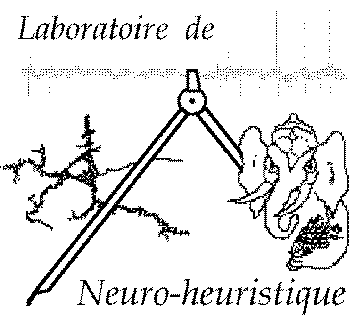
 Research activities
Research activities

|
|
Understanding the neural mechanisms underlying complex behavior in higher vertebrates--and, eventually, in humans--is a crucial goal of Neuroscience.
The neuroheuristic approach can not be limited to multidisciplinarity or interdisciplinarity, but it is aimed towards an even broader integrated level known as transdisciplinarity. Such integrative approach develops along an experimental axis based on on complex behavioral paradigms that involve learning and memory phenomena occurring not only in animals but also in human. This approach will enhance our understanding of how the brain deals with complex sensory environment, and so will have a broad impact on research in many sensory fields, in sensorimotor integration, and in attention and cognition. Among the main categories in which behavioral studies can be classified and investigated, "associative learning" encompasses those basic learning processes necessary to associate different events or concepts. In general terms, most of the motor behavior that animals make can occur under a variety of internal and external conditions placing different needs on the animal and, consequently, the pattern generators responsible for producing the motor outputs which drive a conditioned response, are highly flexible, yet precise.
The proposed study will utilize electrophysiological recordings of the activity of several single neurons simultaneously as well as local field activity in the thalamus and cortex, and higher-order EEG analysis. Knowledge of the modulatory pathways that regulate these processes in mature neurons is limited. The influences of administered neurotrophic factors and neuromodulators in our experimental paradigms will also be tested. More specifically, the modulatory effect at the single neuron level can influence global spatiotemporal pattern generation in large-scale neural networks.
Particular attention to the non-linear dynamics of the patterned activity in simulated and real spike trains will be raised during our investigation. The conditions under which spontaneous activity is self-sustaining in network models may be important for understanding information processing in brain activity. We explored the influence of the membrane time-constant and cellular threshold potential on spontaneous network activity through parameter searches in large-scale neural networks of horizontally interconnected excitatory and inhibitory units. A simulation is presented (Quicktime movie) of a large-scale model of a patch of 1 square mm of cerebral cortex, formed by a 100x100 unit sheet of interconnected cells. The population is composed of two subpopulations of 80% excitatory and 20% inhibitory cells interspersed according to a space-filling pseudo-random distribution.

The neuroinformatics aspect of the neuro-heuristic approach is illustrated by the openAdap.net project, aimed at open contribution and interchange of methods of analyses throughout the Web. The first block of this research effort is represented by DAN (Data Analysis for Neuroscience) for Computer Assisted Neurophysiology. Most of our studies involve recording and analysis of spike train data. The standard format that we adopted is based on theguidelines originally proposed in 1988 by Prof. Moshe Abeles at the Interdisciplinary Center for Neural Computation at The Hebrew University, Jerusalem.

- Rapport d'activité 1995-1999 (en français)
- Rapporto d'attività 1995-1999 (in italiano)
- Informe de actividad 1995-1999 (en castellano)